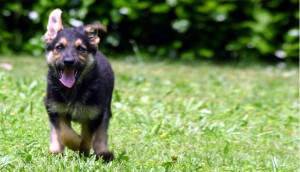Your Basic Guide to Pet Hydration
In the hot summer months, many of us are concerned with proper hydration. Like human beings, animals need to have a certain amount of water to maintain their health and wellbeing. Fortunately, it is fairly easy to determine if your pets are getting enough fluids.
Species and Size:
The first consideration for proper pet hydration is the species and size of your pet. Cats and dogs both have minimum requirements for water each day, with generally dogs requiring more. The general rule is that dogs need an ounce of water daily for each pound of their body weight. This means that a twenty-pound dog needs in excess of two cups of water each day. Cats tend to need less than this, and the average cat needs 27 milliliters for each pound of bodyweight each day. This means that a five-pound cat needs approximately half a cup of water each day.
Other Factors:
Unfortunately, there are some additional factors which may complicate your calculations. For instance, in warmer weather your pet is likely to require a far larger amount of water. Another factor which can affect how much water your pet needs is their diet. If you feed your dog or cat canned pet food, they are likely to require less water, since the food is fairly wet. On the other hand, if your pet is eating dried food, they are likely to need more water. Remember that even in winter your pet still needs to drink adequate water. This means that you will need to ensure that any outside pet bowls have not frozen over.
Is Your Pet Getting Enough Water?
While it is important to monitor your pet’s water intake, this is not always possible and proper hydration can be slightly different for every animal. Fortunately, spotting if your pet is suffering from dehydration is simple. All you need to do is lift a small amount of skin from the back of the neck and release it. If your dog or cat is properly hydrated, this pinch of skin will quickly fall back. If the skin forms almost a tent shape and falls more slowly back into shape, your pet is dehydrated. You can also check inside your pet’s mouth. If his or her gums are sticky or dry, your pet needs more water. If the gums look moist and slick, he or she is properly hydrated.
The Quality of Your Pet’s Drinking Water:
Pet owners should also be aware that the quality of the drinking water is just as important as the quantity. Animals have a similar sensitivity to toxins as humans, so you need to ensure that your pet has good quality and clean drinking water. Simply filling your pet’s water dish from an unfiltered faucet could potentially expose your pet to a risk of long-term health issues. Common contaminants include trace metals, chloride, lead, nitrates and (VOCs) volatile organic compounds. These contaminants can be leached from pipe work or migrated from industrial or agricultural sources, so it is important to have your water checked. Since even trace amounts can trigger health issues in humans, our smaller pets will have an even lower tolerance. This means that they are more susceptible to illness and organ injury. Fortunately, domestic water treatment solutions can offer protection from many of these contaminants, allowing you and your pets access to clean safe drinking water.
About The Author:
Greg Scott is President of Valparaiso based Miracle/EcoWater Systems, the premier water conditioning company in Northwest Indiana serving the Lake, Porter and LaPorte County areas. A 3rd generation water treatment professional, Greg grew up in the family owned business started by his grandfather in the late fifties. He has made water treatment his life and under his direction and high-standards, the company’s water treatment experience, knowledge, and products are unrivaled in region.
Back to
